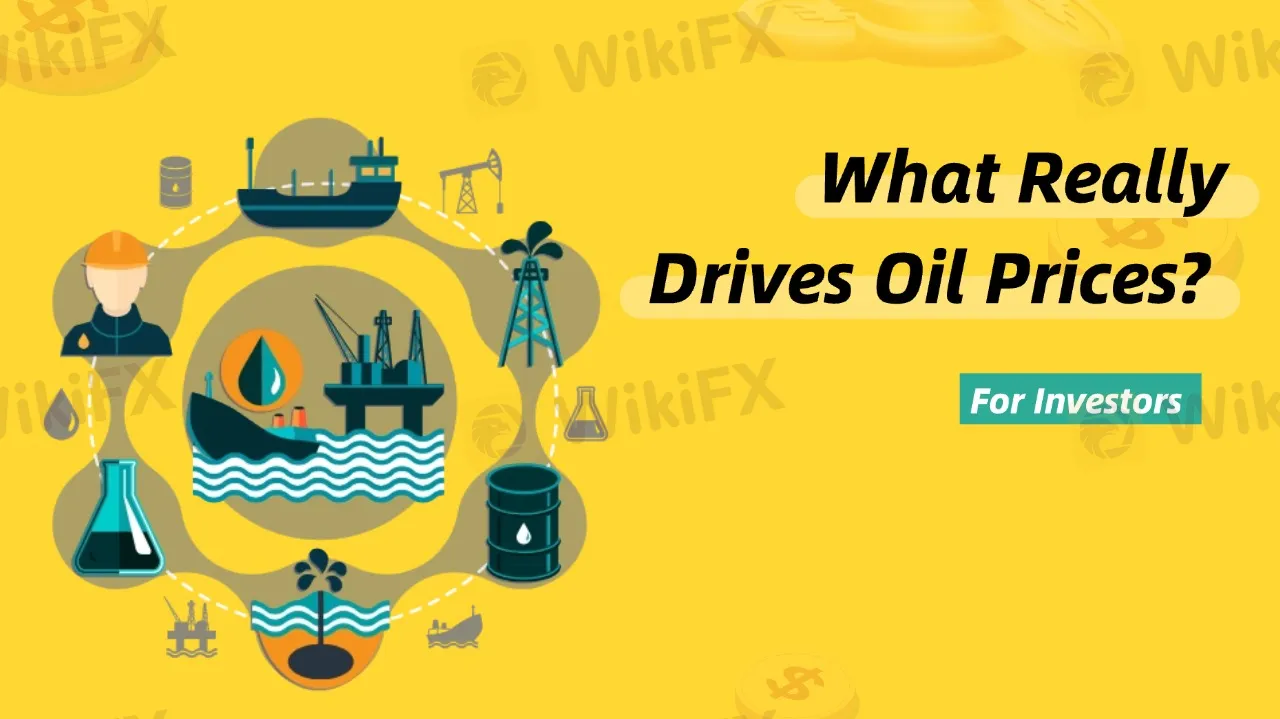简体中文
繁體中文
English
Pусский
日本語
ภาษาไทย
Tiếng Việt
Bahasa Indonesia
Español
हिन्दी
Filippiiniläinen
Français
Deutsch
Português
Türkçe
한국어
العربية
What Really Drives Oil Prices?
Abstract:For investors, fluctuations in oil prices represent both opportunities and risks. Understanding the factors behind these price changes can help investors make more informed investment decisions.

To grasp the reasons behind oil price changes, it is essential to keep an eye on key reports and data. The American Petroleum Institute (API) and the U.S. Department of Energy (EIA) release weekly reports on oil supply and demand, particularly concerning oil inventory changes. These reports inform investors about the current market conditions and the potential direction of oil prices.
Additionally, OPECs production decisions and the political situation in other countries are also crucial. Investors need to closely monitor this information, as it can lead to rapid changes in oil prices. If oil inventories decrease or OPEC decides to cut production, oil prices are likely to rise; conversely, if inventories increase or production is raised, oil prices may fall.
Oil price fluctuations are not determined by a single factor but by the combined influence of various elements. OPEC has a significant impact on oil prices, as its members adjust production quotas to influence global oil supply. Reducing production typically leads to higher oil prices, while increasing output could cause prices to drop. Moreover, political events in the Middle East, such as wars or economic sanctions, often disrupt oil supply, pushing prices higher. U.S. oil inventories and production also play a vital role, with weekly reports reflecting supply changes that influence oil prices. As alternative energies like solar power and natural gas rise in prominence, oil faces growing demand pressure, which could put downward pressure on prices. Global economic performance and industrial demand are also key drivers, with oil prices rising during economic growth and falling during slowdowns. Seasonal factors, such as increased gasoline demand in summer or heating oil demand in winter, can also cause oil price fluctuations.
In summary, oil price changes result from a combination of factors, including the policies of producing countries, geopolitical events, the threat of alternative energies, and the overall performance of the global economy. Investors need to monitor these factors closely, especially important supply and demand reports and political developments. By understanding these dynamics, investors can better predict oil price trends and make informed decisions. For ordinary consumers, staying informed about oil price changes can also help manage the impact of price fluctuations on daily life.

Disclaimer:
The views in this article only represent the author's personal views, and do not constitute investment advice on this platform. This platform does not guarantee the accuracy, completeness and timeliness of the information in the article, and will not be liable for any loss caused by the use of or reliance on the information in the article.
Read more

CySEC warns against 10 unauthorized investment firms
The Cyprus Securities and Exchange Commission (CySEC) has issued a public warning against 10 unauthorized investment firms that are illegally offering investment services to investors.

Voices of the Golden Insight Award Jury | Nattachai Chalermwat, MH Markets
WikiFX Golden Insight Award uniting industry forces to build a safe and healthy forex ecosystem, driving industry innovation and sustainable development, launches a new feature series — “Voices of the Golden Insight Awards Jury.” Through in-depth conversations with distinguished judges, this series explores the evolving landscape of the forex industry and the shared mission to promote innovation, ethics, and sustainability.

Trading Oscillators: The Secret Tool Every Trader Should Know
If you’ve ever looked at a trading chart and wondered how traders know when a price is “too high” or “too low,” the answer often lies in trading oscillators. A trading oscillator is a type of technical indicator that helps traders measure the momentum of price movements. In simple terms, it tells you when a currency pair, stock, or commodity might be overbought or oversold — which can signal a potential reversal.

Is Amillex Safe or a Scam? Understanding Rules and Security
You are asking an important question: Is Amillex safe or a scam? The simple answer is that Amillex works in an unclear area that needs careful study. It is not a complete scam like fake websites that steal your money right away, but it also does not meet the safety rules of the best, well-regulated brokers. Read on to explore more details.
WikiFX Broker
Latest News
Angel one 2025 Review & Complaints
Latest FCA Daily Alerts and Consumer Warnings for 2025
Webull Widens Crypto Futures with Coinbase Derivatives
Is Nash Markets Regulated or Risk? Truth About Nash Markets’ License & Withdrawal Issues
CySEC Blocks Certification Access to Combat Advisor Impersonation
Exclusive Markets Under the Scanner: Traders Report High Swap Charges, Deposit Discrepancies & More
The United States Outgrows All Its Major Peers
PINAKINE Broker India Review 2025: A Complete Guide to Safety and Services
Pinched By Penny Shortage, US Retailers Beg Congress To Step In
PINAKINE Broker Review: A Complete Look at Its Services and Risks
Currency Calculator




